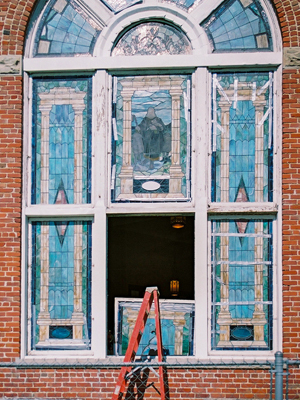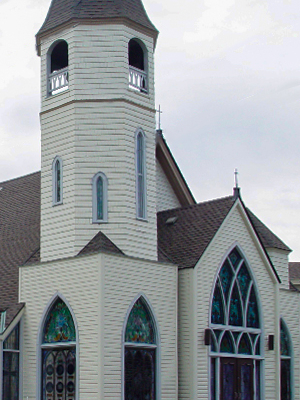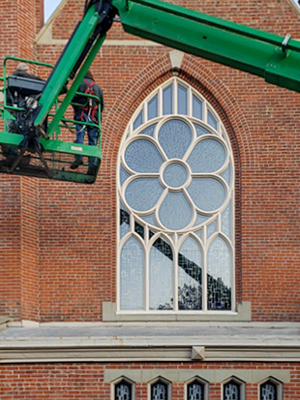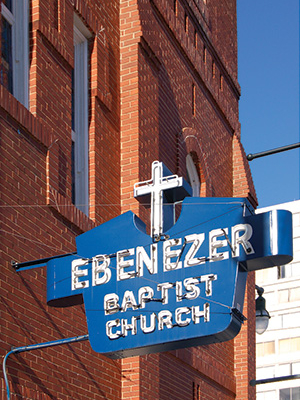
Lead Came Assessment
Lynchburg Stained Glass can perform an assessment of the framework of metal strips, called “lead came” or simply “came,” which weaves through a stained-glass window to provide structural support. Came is an alloy comprised mostly of lead, but it also includes other metallic elements in small amounts, such as tin and nickel.
Lead came has a service life of 100-120 years under normal atmospheric conditions. Extreme temperature cycles and atmospheric pollution may act to shorten the life of the lead. Several symptoms that show stained glass needs repairing are listed below.
Symptoms of Lead Came Failure
Brittle Lead. Lead came becomes increasingly brittle with age, and brittleness comprises the primary reason for stained glass’ 100-120 year life-expectancy. Cracks in the lead’s soldered joinery provide a good indication of the lead nearing the end of its serviceable life.
Out-of-plane Bowing of stained glass is a progressive failure of the lead structure of the window. Bowing can lead to broken lead joints and broken glass which further weaken the window. Causes can range from inadequate bracing and support to improper glazing techniques during the initial crafting of the window.
Oxidization appears as a crusty scale on the surface of the lead. Once a scale has formed, it continues to etch away the surface of the lead (much like corrosion in steel).
Replacement of Deteriorated Lead Came
It is not possible to replace deteriorated lead came in place. The window must be removed for re-lead restoration. Re-lead restoration is the process of dismantling the stained glass window, cleaning the glass, and reassembling the window with new lead came. Not all windows deteriorate at the same rate. Even within the same church, some windows may require re-restoration while others may not be in the same critical condition. Windows are accessed individually and recommendations are made accordingly.
Stock section of Lead Came
Stained Glass assembly with new lead came








